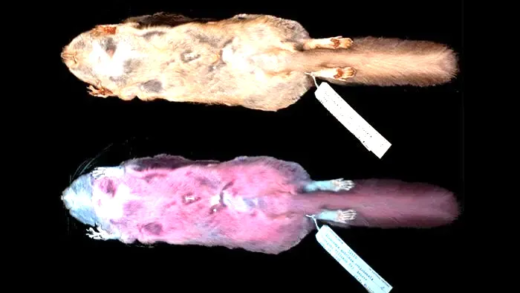Light disinfection shows promise against various viruses, utilizing mechanisms such as generating reactive oxygen species and disrupting viral envelopes. Emerging laser techniques and studies highlight its effectiveness compared to traditional sanitizers. Potential applications in medicine include surface disinfection and air purification, while safety concerns and future trends suggest an evolving landscape in hygiene technology.
Types of Viruses Affected by Light
Light plays a crucial role in disinfection, specifically in targeting viruses. Certain types of viruses are particularly susceptible to light treatment, including:
- Enveloped viruses: These viruses, like influenza and HIV, have a lipid membrane that can be disrupted by light.
- Non-enveloped viruses: Viruses such as norovirus can also be affected by specific wavelengths of light.
- Bacterial viruses (bacteriophages): These can be effectively inactivated using light, showing promise in various applications.
Understanding which viruses are affected by light is essential for developing effective disinfection strategies. Research indicates that UV light and certain visible light wavelengths can deactivate many common viruses, making them a viable option for hygiene technology.
Mechanism of Action: How Light Destroys Viruses
Visible light interacts with viruses through photochemical reactions. When exposed to specific wavelengths, light can:
- Generate reactive oxygen species (ROS): These highly reactive molecules can damage viral proteins and nucleic acids.
- Disrupt the viral envelope: For enveloped viruses, light can break down the lipid layer, rendering them inactive.
This mechanism underlines the science behind light’s effectiveness in virus disinfection. The interaction of light with viral structures is not only fascinating but also holds great potential for future applications in public health.
Laser Techniques Under Research
Research is actively exploring various laser methods for virus disinfection. Some promising techniques include:
- Pulsed laser systems: These lasers emit short bursts of high energy, effectively targeting and destroying viruses.
- Continuous wave lasers: These provide a constant output and are being tested for their ability to disinfect surfaces.
- Laser-induced breakdown spectroscopy: A cutting-edge method that uses lasers to analyze and deactivate pathogens.
Insights into these cutting-edge laser technologies reveal their potential to revolutionize disinfection practices, making them an exciting area of research in the fight against viral infections.
Effectiveness of Light vs. Hand Sanitizers
Light disinfection is emerging as a powerful alternative to traditional hand sanitizers. While hand sanitizers contain alcohol that effectively kills many viruses, light offers a different mechanism that can enhance disinfection efforts. Studies indicate that certain wavelengths of light, such as UV-C, can inactivate viruses more efficiently than hand sanitizers in some situations.
- Speed: Light can disinfect surfaces rapidly, often in seconds, while hand sanitizers require more time to dry and take effect.
- Broader Spectrum: Light targets a wider range of viruses, including those that may be resistant to alcohol-based sanitizers.
- No Residue: Unlike hand sanitizers, light does not leave any chemical residues, making it safer for sensitive environments.
However, it’s essential to note that while light disinfection is effective, it should not entirely replace hand sanitizers, especially in personal hygiene practices. Combining both methods could provide an enhanced level of protection against viral infections.
Potential Applications in Medicine
Light’s ability to combat viral infections opens up numerous potential applications in the medical field. Hospitals and clinics are exploring innovative uses of light for disinfection:
- Surface Disinfection: Using UV light in operating rooms and patient rooms can significantly reduce the risk of hospital-acquired infections.
- Air Purification: Ultraviolet light can be integrated into HVAC systems to continuously disinfect the air, reducing airborne viruses.
- Wound Care: Certain wavelengths of light promote healing and can be used to disinfect wounds, killing pathogens without harming surrounding tissue.
These applications demonstrate how light technology can enhance patient safety and improve health outcomes. As research progresses, we may see even more innovative uses of light in medical settings.
Safety Concerns with Laser Use
While the use of lasers for virus disinfection shows promise, there are important safety considerations to address. High-intensity lasers can pose risks to both users and patients if not properly managed. Key concerns include:
- Eye Safety: Direct exposure to laser light can cause serious eye injuries, necessitating protective measures.
- Skin Damage: High-intensity lasers can also harm skin, requiring appropriate barriers and safety protocols.
- Regulatory Compliance: Ensuring that laser disinfection systems meet safety standards is crucial for their widespread adoption.
Addressing these safety concerns is vital for the effective implementation of laser disinfection technologies. Proper training and adherence to safety protocols will help mitigate risks while harnessing the benefits of this innovative approach to hygiene.
Future of Hygiene and Infection Prevention
Light technology has the potential to revolutionize hygiene and infection prevention. By integrating light disinfection into everyday practices, we can enhance public health measures significantly. This technology offers:
- Continuous Disinfection: Unlike traditional methods, light can provide ongoing disinfection in high-traffic areas, reducing the likelihood of virus transmission.
- Cost-effectiveness: Over time, the operational costs of light-based disinfection may be lower than chemical disinfectants, particularly in large facilities.
- Environmental Benefits: Light disinfection reduces the need for harsh chemicals, which can harm the environment and human health.
As we move forward, incorporating light disinfection into public spaces, hospitals, and homes could lead to healthier environments and fewer infections.
Real-World Examples and Studies
Studies have demonstrated the effectiveness of light in combating viruses. For instance, research has shown that:
- UV-C Light: A study published in the “American Journal of Infection Control” revealed that UV-C light could reduce airborne viruses by up to 99% in controlled environments.
- Hospital Trials: Hospitals utilizing UV light for surface disinfection reported a significant decrease in healthcare-associated infections.
- Wound Healing: Research indicates that specific wavelengths of light not only disinfect but also promote faster healing in infected wounds.
These examples underline the practical applications of light technology in real-world settings, showcasing its potential to enhance hygiene and infection control.
Emerging Trends in Light Disinfection
The future of light as a disinfectant is bright, with several emerging trends:
- Smart Technology Integration: Smart sensors combined with light disinfection systems can optimize usage based on real-time contamination levels.
- Personal Devices: Development of portable light disinfection devices for personal use, like UV-C sterilizing wands.
- Research Advancements: Continuous research into new wavelengths and laser techniques will likely yield even more effective disinfection methods.
These trends illustrate a shift toward innovative and efficient light-based solutions in hygiene technology, reflecting a growing reliance on science to combat viral infections.





Comments are closed.